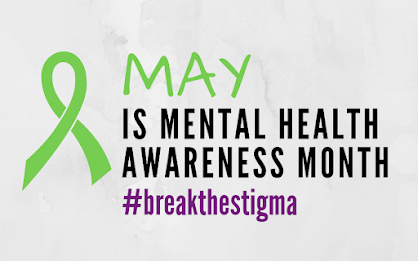PTSD AWARENESS MONTH Week No. 1 (6.5.23)
What is PTSD?
Post-traumatic stress disorder (PTSD) is a mental
health condition that's triggered by a terrifying event — either experiencing
it or witnessing it. Symptoms may include flashbacks, nightmares, and severe
anxiety, as well as uncontrollable thoughts about the event.
Most people who go through traumatic events may have
temporary difficulty adjusting and coping, but with time and good self-care,
they usually get better. If the symptoms get worse, last for months or even
years, and interfere with your day-to-day functioning, you may have PTSD.
Getting effective treatment after PTSD symptoms
develop can be critical to reduce symptoms and improve function.
Post-traumatic stress
disorder symptoms may start within one month of a traumatic event, but
sometimes symptoms may not appear until years after the event. These symptoms
cause significant problems in social or work situations and in relationships.
They can also interfere with your ability to go about your normal daily tasks.
PTSD symptoms are
generally grouped into four types: intrusive memories, avoidance, negative
changes in thinking and mood, and changes in physical and emotional reactions.
Symptoms can vary over time or vary from person to person.
PTSD symptoms can vary in intensity over time. You may have more PTSD symptoms when you're stressed in general, or when you come across reminders of what you went through. For example, you may hear a car backfire and relive combat experiences. Or you may see a report on the news about a sexual assault and feel overcome by memories of your own assault.
Symptoms
of intrusive memories may include:
- Recurrent, unwanted distressing
memories of the traumatic event
- Reliving the traumatic event as if it
were happening again (flashbacks)
- Upsetting dreams or nightmares about
the traumatic event
- Severe emotional distress or physical
reactions to something that reminds you of a traumatic event.
QUICK FACTS
In recognition of PTSD Awareness Month and PTSD Awareness Day on June 27, we’re highlighting 10 important statistics to help raise awareness and combat stigmas regarding this disorder.
- People with PTSD may rehash and still be frightened by these past events, fight against sleeplessness, be dehydrated and/or numb, feel nauseous, and can easily be startled. They can also experience uncontrollable shaking, chills or heart palpitations, and headaches,
- Approximately seven or eight of every 100 people will have PTSD at some point in their lives.
- Women are more likely to experience PTSD—approximately 10 out of every 100 women compared to four out of 100 men.
- About half of people with PTSD may recover in three months without treatment. However, there is the possibility that symptoms will not go away on their own and may last longer than three months.
- Children may be diagnosed with PTSD if long-term symptoms last more than one month. (The National Child Traumatic Stress Network provides a guide to distinguish the difference between attention-deficit hyperactivity disorder [ADHD] and PTSD, which often have the same symptoms of restlessness, being fidgety, inability to pay attention, and becoming disorganized.)
- PTSD that lasts for longer periods may be due to the cause of the number of times that a traumatic incident happened, the severity of the event, fatality risk, a history of past trauma, mental health problems before the current incident occurred, and direct exposure to the traumatic event.
- People with severe forms of PTSD may experience challenges at work, at home, and/or in social settings.
- Parents of children with PTSD should encourage their children to express their feelings and thoughts without judgment.
- While it may be difficult to interact with someone with PTSD, know that this person is having just as tough a time if not more. The nervous system of someone with PTSD is especially vulnerable, which may lead to behavior or feelings such as being overly alert, angry, irritable, depressed, or untrusting. A supportive social circle may be the best answer to calming him or her down.
- Face-to-face support may be better than love from afar for someone with PTSD, according to trauma experts. This can come in the form of participating in pleasurable hobbies, rhythmic exercises or dancing, and/or lunch dates.
These statistics were compiled from Centers for Disease Control and Prevention (Coping Handout), Centers for Disease Control and Prevention (PTSD), Help Guide, National Institute of Mental Health, The National Child Traumatic Stress Network, U.S. Department of Veterans Affairs (Awareness Month), and U.S. Department of Veterans Affairs (PTSD).



Comments
Post a Comment